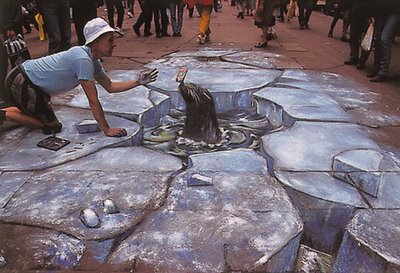
Although I can understand the disappointment that many people apparently feel at the loss of the "planet" Pluto from our solar system, I personally find it exciting to see science in the making. We forget that it was less than 100 years ago (in 1930 to be exact) when Pluto was added to the list of planets circling our sun. Astronomers were searching for a ninth planet because of tiny, unexpected variations in the observed orbits of Neptune and Uranus. Through luck and perserverance, Pluto was found just where they thought it should be. Unfortunately, it's size and distance didn't really account for the orbital variations. But it was welcomed anyway. This picture shows Pluto's size in relation to the Earth. It is about 1/2 the diameter of our moon. There was always some suspicion about Pluto. In fact the book "A Matter of Degrees" by Gino Segre published in 2002 stated, "As for Pluto, a bit of an outcast... perhaps shouldn't even be called a planet."
Now, we find there are more trans-Neptune "planets" including one that is larger than Pluto. Do we keep adding to the list or redefine what a planet is? Astronomers of the world voted to redefine, or more accurately define, what a planet is since it had never really been adequately defined. There are three main conditions for an object to be called a 'planet', according to the IAU resolution of 2006.
1. The object must be in orbit around a star, but not be a star itself.
2. The object must be massive enough to be a sphere by its own gravitational force. More specifically, its own gravity should pull it into a shape of hydrostatic equilibrium.
3. It must have cleared the neighborhood around its orbit.
Because Pluto fails to meet the third condition it was "downgraded" to a dwarf planet.
This story has all the hallmarks of science - discovery, analysis, definition, hypothesis, theory, application and controversy. I think science teachers will be thrilled at the chance to show kids how science is still making strides in expanding our knowledge of the universe.


































































